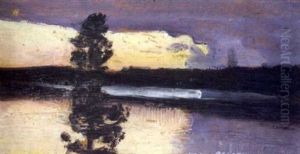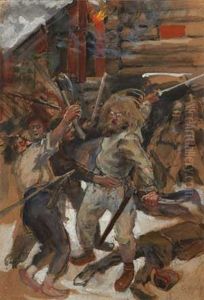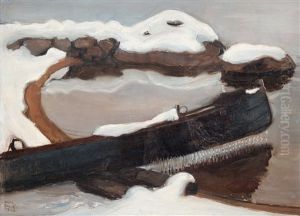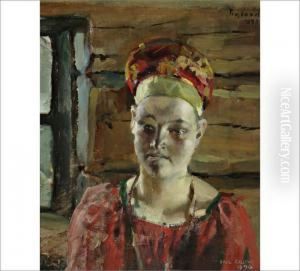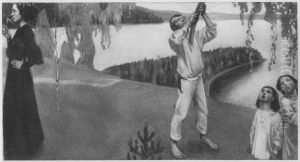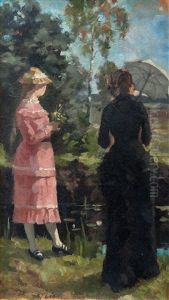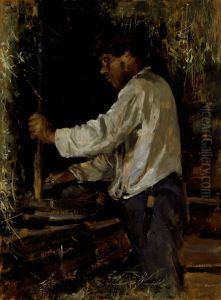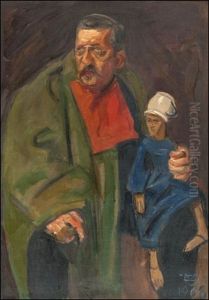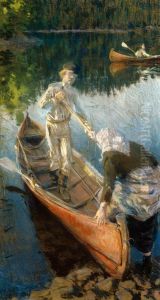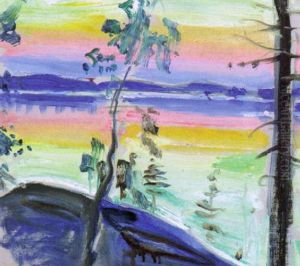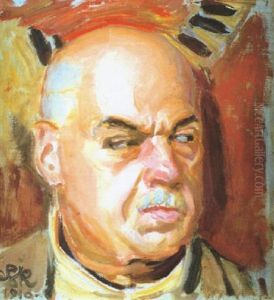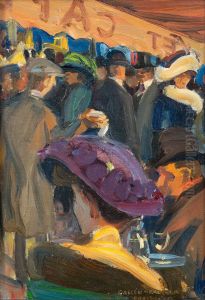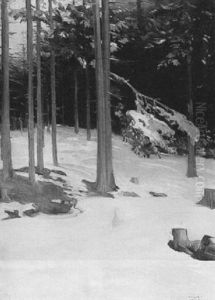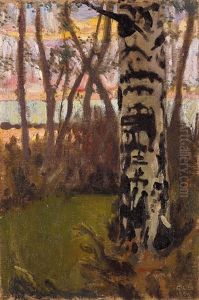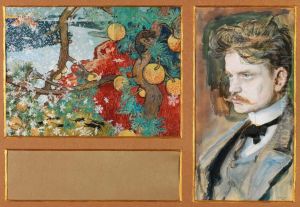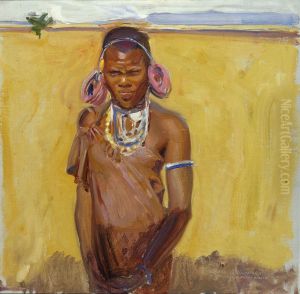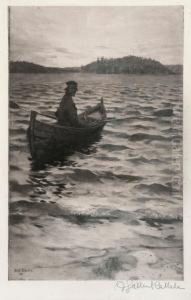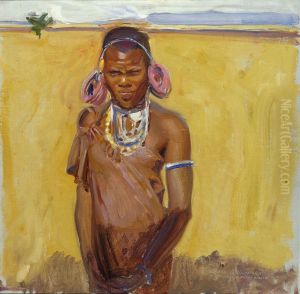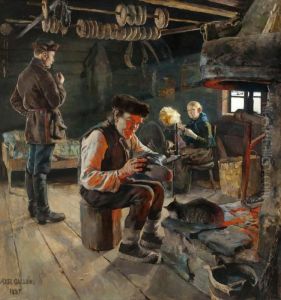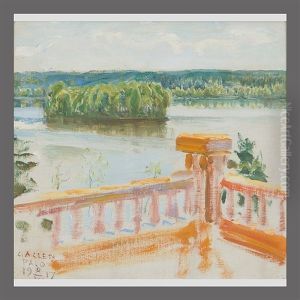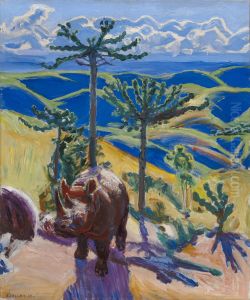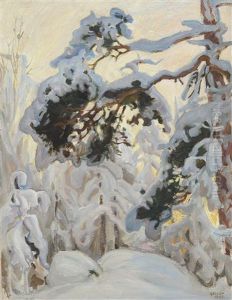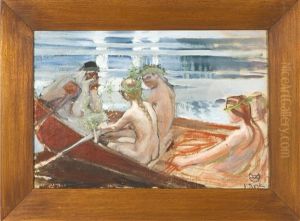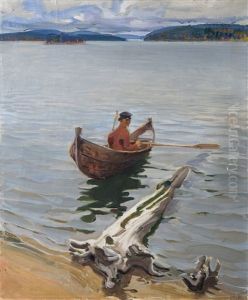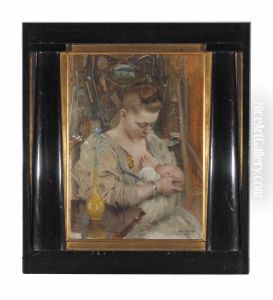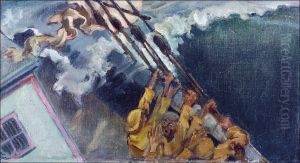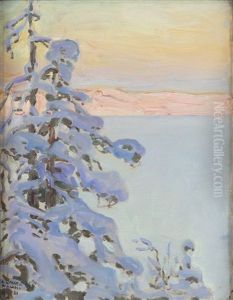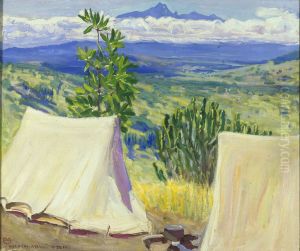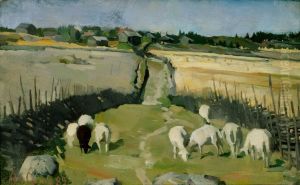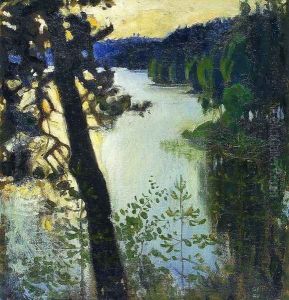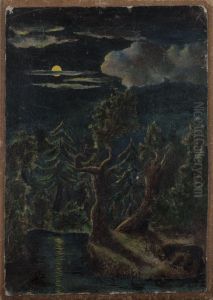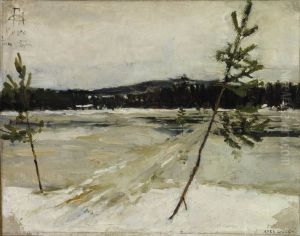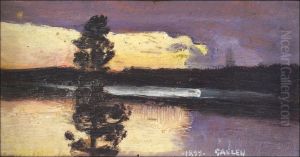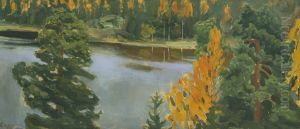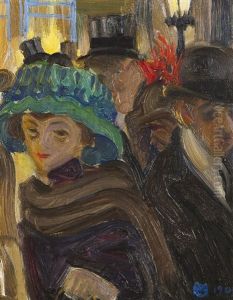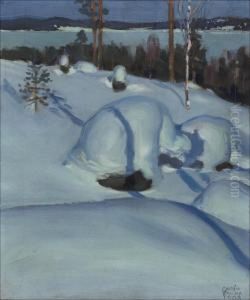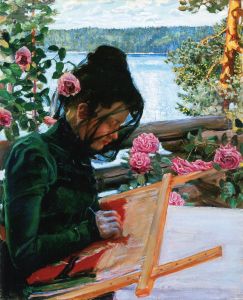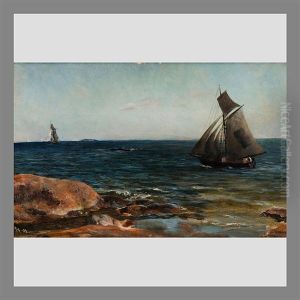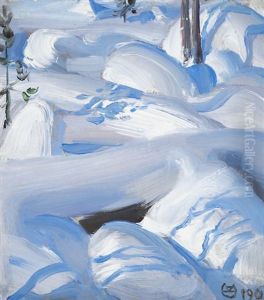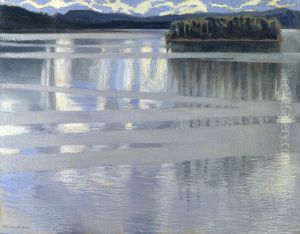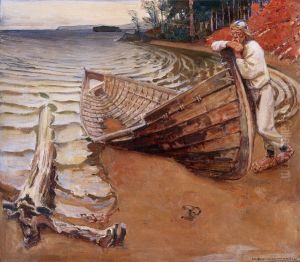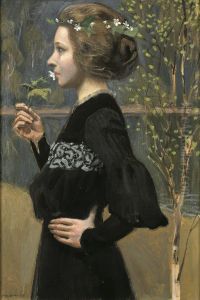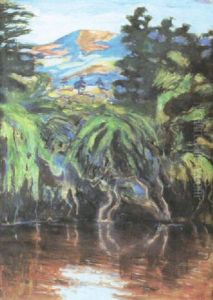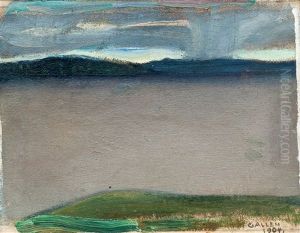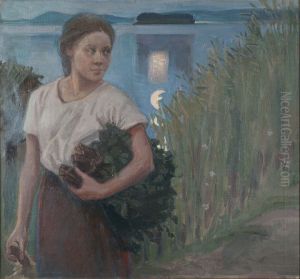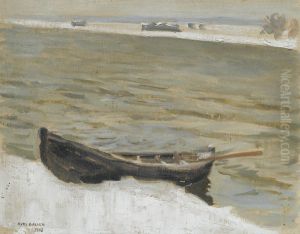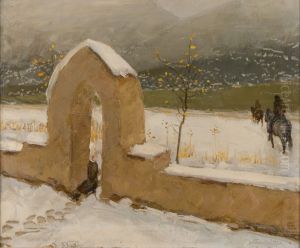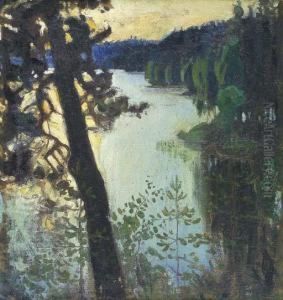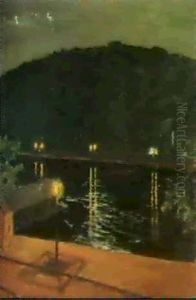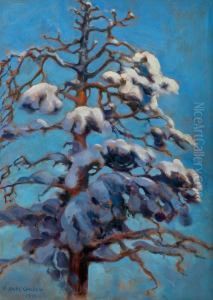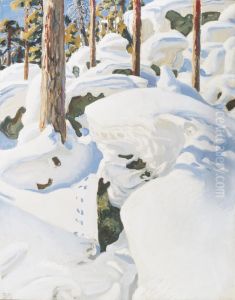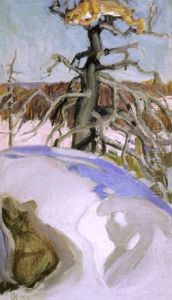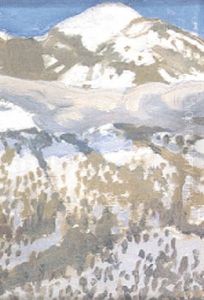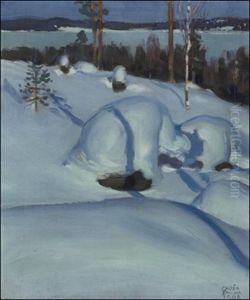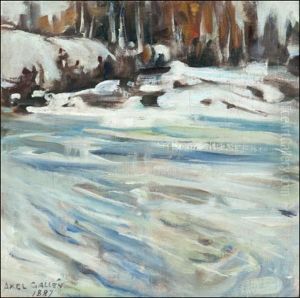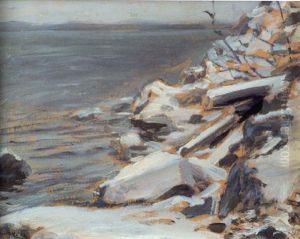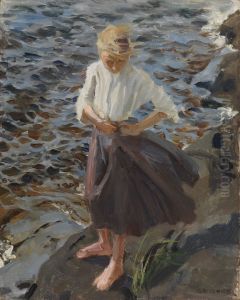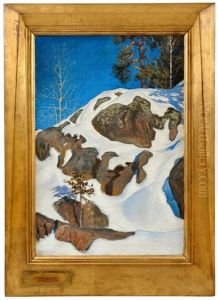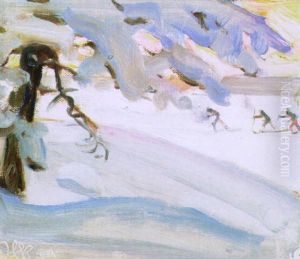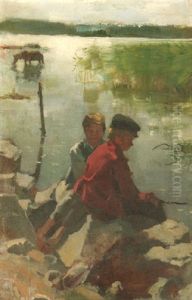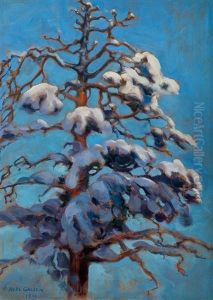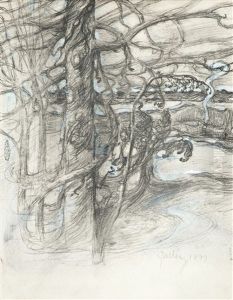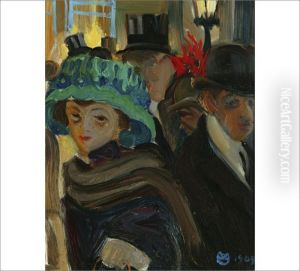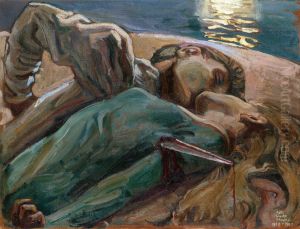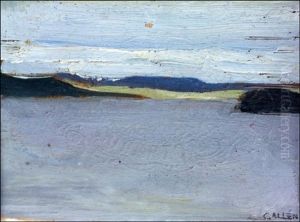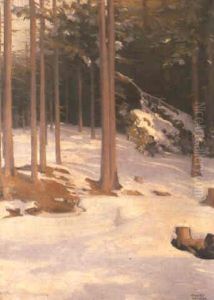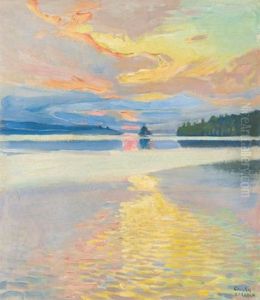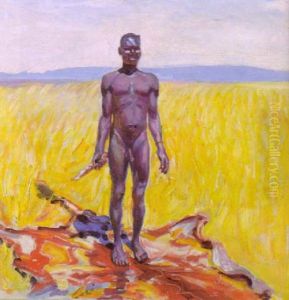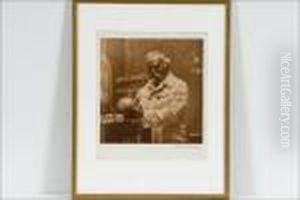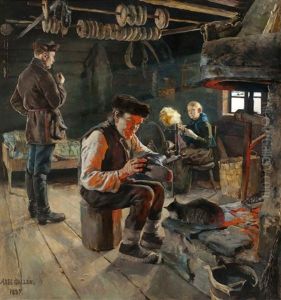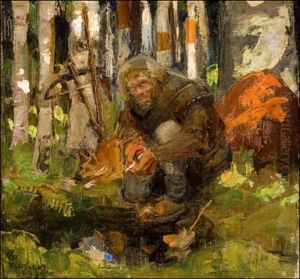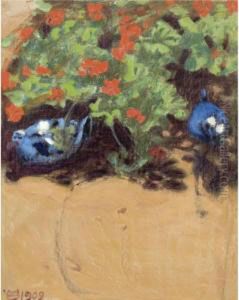Akseli Valdemar Gallen-Kallela Paintings
Akseli Valdemar Gallen-Kallela, born Axel Waldemar Gallén on April 26, 1865, in Pori, Finland, was a distinguished Finnish painter, graphic artist, and designer who played a pivotal role in the formation of a distinct Finnish national identity in art. Gallen-Kallela's work was heavily influenced by the Kalevala, the Finnish national epic, and he is best known for his illustrations of its themes and stories. His style evolved over time, incorporating elements of realism, symbolism, and later, expressionism.
Gallen-Kallela studied painting at the Finnish Art Society in Helsinki and continued his education abroad, spending time in Paris at the Académie Julian. His early works were in the naturalist style, but after his exposure to the symbolist movement and the works of the Pre-Raphaelite Brotherhood in Europe, his artwork took on a more nationalistic and mystical quality. His paintings often featured the rugged Finnish landscape and the lives of the Finnish people, as well as mythological subjects drawn from the Kalevala.
Notable works by Gallen-Kallela include the Aino Triptych (1891), inspired by a tragic love story from the Kalevala, and 'The Defense of the Sampo' (1896), a dramatic portrayal of a pivotal battle from the epic. His work on the Kalevala culminated in a series of frescoes for the Finnish Pavilion at the Paris World's Fair in 1900, which brought him international recognition.
In addition to painting, Gallen-Kallela also designed textiles, stained glass, and furniture, contributing to the broader Arts and Crafts movement in Finland. He was instrumental in organizing the first exhibition of Finnish art in Helsinki in 1896, and he played a significant role in the design of the Finnish pavilions for international expositions.
Gallen-Kallela's impact on Finnish culture extended beyond the visual arts. He was a central figure in the development of the Finnish identity during a time when Finland was seeking independence from Russia. His art was seen as a form of cultural resistance, emphasizing Finnish mythology and the beauty of the Finnish landscape.
Akseli Gallen-Kallela changed his Swedish-language family name to the more Finnish-sounding Gallen-Kallela in 1907, reflecting his commitment to the Finnish nationalist movement. He continued to work and exhibit internationally, including participation in the Venice Biennale. During the Finnish Civil War in 1918, he designed military uniforms and created propaganda art for the White Army.
After the war, Gallen-Kallela lived and worked in various countries, including the United States, where he had exhibitions and gave lectures on Finnish art. He returned to Finland in the late 1920s and continued to paint until his death on March 7, 1931, in Stockholm, Sweden, while preparing for a solo exhibition. The Gallen-Kallela Museum, located near Helsinki in a building designed by the artist as his studio and home, is dedicated to his life and work.
